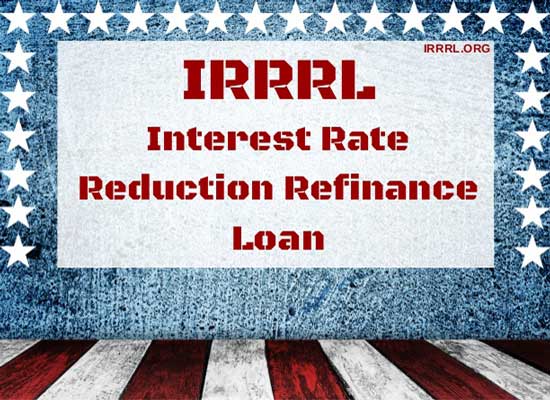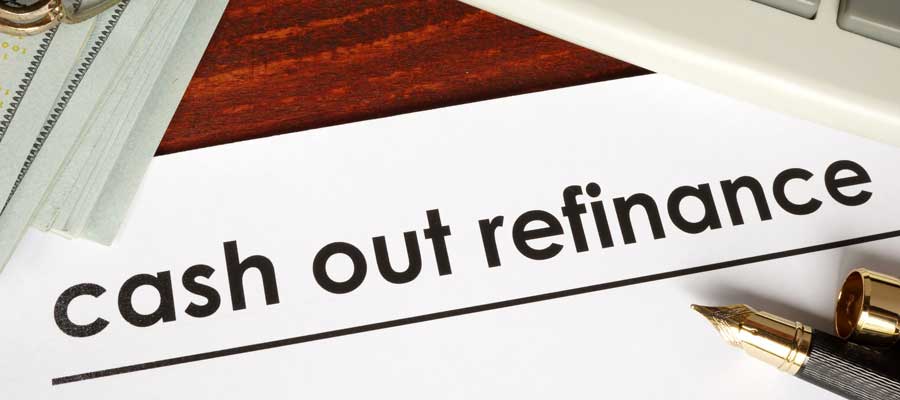While a VA home loan has some significant benefits like no private mortgage insurance (PMI) and no down payment, veterans may find themselves wishing or needing to refinance their VA mortgage. Yes, you can refinance a VA loan, and there are several options for doing so. Like your original VA loan, refinancing options go through private lenders and are subject to their specific credit policies and internal procedures. Veterans are encouraged to get quotes from several lenders and speak to a VA loan specialist at their regional service center any time they have questions about the program or lender claims.
VA Loan IRRRL Refinance

The primary way to refinance your VA loan is through an Interest Rate Reduction Refinance Loan or IRRRL. Often called a VA streamline, this type of loan is intended to let veterans and service members refinance their VA loan if interest rates fall. Service members and veterans reuse their original eligibility to refinance the original VA loan, so an IRRRL can only be used to refinance a property where you already used your VA loan eligibility. If you have a VA loan on one property and another type of mortgage loan on another property, the IRRRL must only be used on the VA loan property. However, you do not have to currently live on the property associated with the VA loan, you only need to certify that you occupied the home previously.
While any VA lender can offer IRRLs, as with other VA loans, lenders are not required to give veterans an IRRRL. However, no appraisal or credit underwriting package is required by the VA when applying with a lender for an IRRRL. You can refinance an existing VA adjustable rate mortgage (ARM) to a fixed rate loan through the IRRRL program, but doing so often results in an interest rate increase.
VA Loan Cash-Out Refinance
Another refinancing option for VA loans is a cash-out refinance. This program is intended for veterans and service members for two purposes:
-
First, those with a current VA loan who need or want to take cash out of the home equity for items such as debt payment, school expenses, or home improvements and repairs can apply.
-
Second, qualifying veterans or service members who have a conventional home loan but would like to refinance into a VA loan. The VA guarantees loans up to 100 percent of the value of the home, within program limits and entitlement limits.
The cash-out refinance option operates under the same rules as a VA loan used for the initial purchase of the home, so the same rules for documentation and credit checks apply. The VA loan program does not require lenders to grant loans to veterans or service members in the VA loan program, nor are they required to offer specific deals. In general, with the refinance program, most lenders will loan 90 percent of the home’s current appraised value in a cash-out refinance.
It is important to note that if the veteran is considering a cash-out refinance to make improvements to the home due to disability-related needs, there are VA programs that may assist in these situations without a refinance that reduces home equity. Both the VA Specially Adapted Housing (SAH) grant and Special Housing Adaptation (SHA) Grant programs help pay for adaptations to a home for certain service-related disability needs.

VA Loan to Conventional Refinance
There are times when a veteran or service member may want to refinance their current VA loan into a conventional loan program. Some of these reasons are:
-
To free up the VA loan benefits to purchase a new primary residence while converting the current home to a rental unit.
-
Better loan terms are available through a conventional program compared to the VA mortgage held.
-
Veterans and service members who have been in their homes long enough to have sufficient equity and no longer need to pay PMI may find better interest rate deals outside of the VA loan system.
-
A veteran or service member has multiple mortgages, and the secondary lenders will not subordinate their lien to allow for IRRRL program qualification.
When refinancing to a conventional loan, remember that the VA guaranty no longer applies and that you are purely under state and federal regulations rather than the rules used to qualify veterans and service members. Service members and veterans are encouraged to compare VA refinancing offers carefully, and conventional loan refinancing offers before committing to a conventional refinancing loan.
Refinancing Scams Targeting Veterans
In November 2017, the VA and the Consumer Financial Protection Bureau issued a warning to service members and veterans who currently have home loans.
The warning includes details on offers for refinancing that often arrive via the U.S. Mail in official-looking envelopes using logos similar to the VA’s or illegal copies of the VA’s logo and envelope design. The interior letter presents an offer that attempts to mimic official VA correspondence and uses terms like “VA Form” and regulation numbers. If you research the regulation numbers, you will often find that they are not accurate.

The correspondence will attempt to make service members believe the refinance is required to protect benefits that the loan program is changing so that a refinance is needed to access new benefits, or that the mortgage lender is changing and you need to fill out confirmation paperwork although there is no real connection to your lender. Often these aggressive and misleading sales pitches begin showing up only a few months after you close on your VA mortgage loan and prey on the nerves that go with a home purchase and the hectic nature of life during the moving and closing process.
Other red flags mentioned by the VA and the Consumer Financial Protection Bureau include offers to skip payments, cash back from escrow, and low interest rates without details. Skipping payments is a definite red flag as under the IRRRL rules, skipping one or more payments as a way of getting cash is prohibited explicitly under VA rules. While refunds from escrow are not forbidden, the VA reports that veterans are experiencing broken promises from these unethical loan companies concerning this claim, often receiving far less than promised or nothing at all.
Refinance deals offering low interest rates without details can be designed to mislead service members into believing the rate is for a 30-year fixed loan, while the offer is really for a 15-year loan or an adjustable rate mortgage, possibly resulting in much higher payments. Often these extremely low rates are contingent on the service member buying down the rate or paying the lender up front for discount point programs that lower the rate but are drastically overpriced, negating any savings. Many of these cash back or skipped payment offers deceptively add costs back into the loan where the service member may not notice them until it is too late.
If you receive a refinancing offer that concerns you, the VA asks that you call a VA loan specialist at (877) 827-3702. If you have problems with a VA refinance you can submit a complaint to the Consumer Financial Protection Bureau online or by calling (855) 411-2372.


